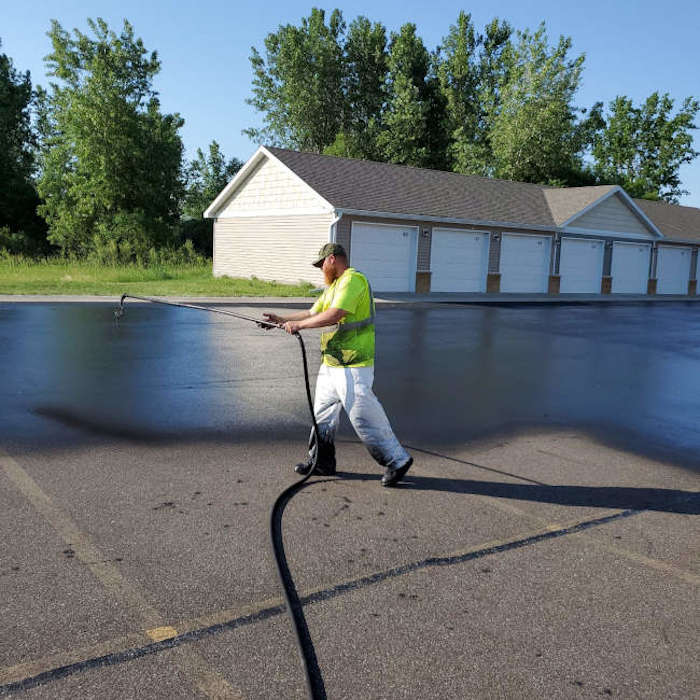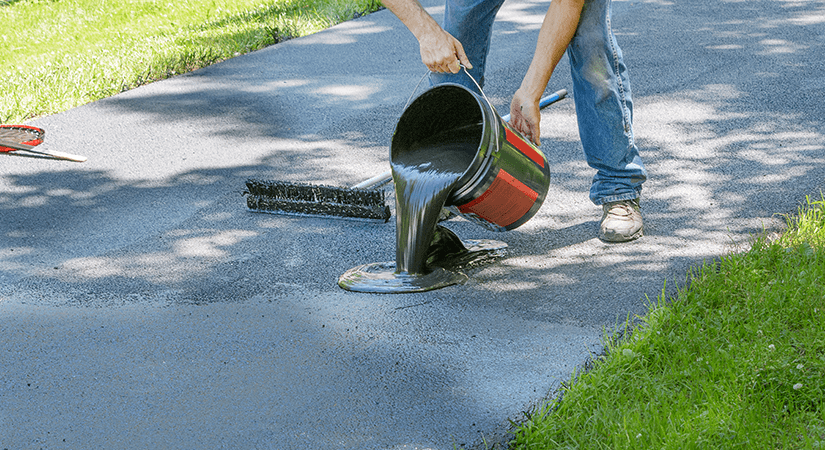Maximize Durability: Hot Mix Asphalt Sealing for Angled Parking Structures
Maximize Durability: Hot Mix Asphalt Sealing for Angled Parking Structures
Blog Article
Hot Mix Asphalt: A Lasting Solution for Pavement
Warm Mix Asphalt (HMA) has emerged as a leading lasting option for sidewalk solutions, providing a myriad of innovative technologies and environmental advantages. Its ability to reuse materials and reduce energy intake provides an engaging case for its adoption in road construction tasks. Moreover, the long-term efficiency and longevity of HMA make it a recommended alternative for facilities advancement. As the need for green construction methods expands, exploring the subtleties of HMA's sustainability can give useful insights right into the future of sidewalk remedies.
Ecological Advantages of Hot Mix Asphalt

Additionally, Warm Mix Asphalt helps to minimize urban warmth island impacts. Its dark shade takes in sunshine, decreasing the quantity of warm mirrored back into the ambience compared to lighter-colored sidewalks. This can decrease ambient temperature levels in metropolitan locations, decreasing the need for cooling and inevitably decreasing power consumption.
On top of that, Warm Mix Asphalt contributes to improved stormwater administration. Its permeable nature allows water to charge and penetrate the sidewalk groundwater materials, lowering runoff and the risk of flooding. These environmental advantages make Warm Mix Asphalt a sustainable choice for paving freeways and roadways.
Energy Effectiveness in HMA Production
Is energy efficiency a crucial element in the manufacturing of Hot Mix Asphalt (HMA)? Energy plays a considerable role in the production of HMA, impacting both price and ecological sustainability. One crucial aspect of power effectiveness in HMA production is the usage of warm mix asphalt (WMA) modern technologies.
Moreover, innovations in plant innovations have led to more energy-efficient HMA manufacturing procedures. By enhancing power usage in HMA production, the sector can minimize its carbon footprint while keeping high-grade sidewalk products.
Recyclability of Hot Mix Asphalt
The recyclability of Hot Mix Asphalt (HMA) is a pivotal facet of its sustainability and long-lasting environmental impact. HMA is among one of the most recycled products in the USA, with over 100 million lots of reclaimed asphalt sidewalk (RAP) being recycled annually in brand-new sidewalk construction. Reusing HMA provides numerous ecological advantages, such as reducing the need for virgin materials, decreasing power consumption throughout production, and reducing the amount of waste sent to garbage dumps.
The process of reusing HMA includes grating the existing sidewalk, squashing it right into smaller pieces, and blending it with brand-new aggregate and asphalt binder to develop a recycled mix. This recycled mix can commonly perform along with or also far better than conventional HMA, while needing less raw materials and producing reduced greenhouse gas discharges. By including RAP right into new sidewalk jobs, roadway firms can preserve natural sources, reduce costs, and minimize the environmental impact of road building and construction and upkeep activities. Generally, the recyclability of HMA plays a substantial role in promoting sustainable methods within the sidewalk market.

Long-Term Performance of HMA
Asphalt sidewalks demonstrate sturdiness and durability over an extended period, showing the long-term efficiency of Hot Mix Asphalt (HMA) Additionally, innovations in HMA innovation, such as the usage of polymer-modified binders and warm mix asphalt, have actually even more boosted the toughness and check out here longevity of HMA pavements. By prioritizing top quality construction and maintenance techniques, HMA continues to prove itself as a lasting and cost-effective solution for resilient pavement framework.

HMA: Toughness and Sustainability
Demonstrating both durability and sustainability, Warm Mix Asphalt (HMA) has ended up being a cornerstone in the building of long-lasting sidewalk infrastructures - hot mix asphalt. HMA's toughness comes from its capacity to endure hefty tons, rough weather problems, and high web traffic quantities, making it a reliable option for roadways, highways, and airport terminal runways. The structure of HMA, which generally consists of aggregates, binder, and filler, plays an important function in enhancing its long life and resistance to damage
In addition, HMA's sustainability depends on its recyclability and energy-efficient manufacturing procedure. The ability you can try this out to recycle redeemed asphalt sidewalk (RAP) in brand-new HMA mixtures lowers the demand for virgin products and reduces the ecological effect of sidewalk construction and maintenance. Furthermore, the power performance of producing HMA lies in its lower mixing temperatures compared to other pavement materials, leading to reduced power usage and greenhouse gas discharges.
Final Thought
Finally, warm mix asphalt recommended you read (HMA) provides a lasting service for pavement with its environmentally friendly features. HMA's recyclability, power effectiveness in manufacturing, and lasting sturdiness make it a green selection for roadway building and construction. By saving all-natural sources, lowering waste, and decreasing greenhouse gas exhausts, HMA plays a vital role in advertising sustainability in infrastructure growth. Its ability to reduce urban heat island impacts additionally highlights its value in producing durable and eco aware sidewalk systems.
HMA is one of the most recycled products in the United States, with over 100 million tons of recovered asphalt sidewalk (RAP) being reused each year in new sidewalk building.The procedure of recycling HMA includes milling the existing sidewalk, crushing it into smaller sized pieces, and blending it with brand-new aggregate and asphalt binder to produce a recycled mix.Asphalt pavements demonstrate toughness and durability over an extensive duration, reflecting the lasting performance of Warm Mix Asphalt (HMA) In addition, developments in HMA technology, such as the usage of polymer-modified binders and warm mix asphalt, have even more boosted the durability and long life of HMA pavements. The ability to recycle recovered asphalt sidewalk (RAP) in new HMA blends lowers the demand for virgin products and lessens the environmental influence of sidewalk building and maintenance.
Report this page